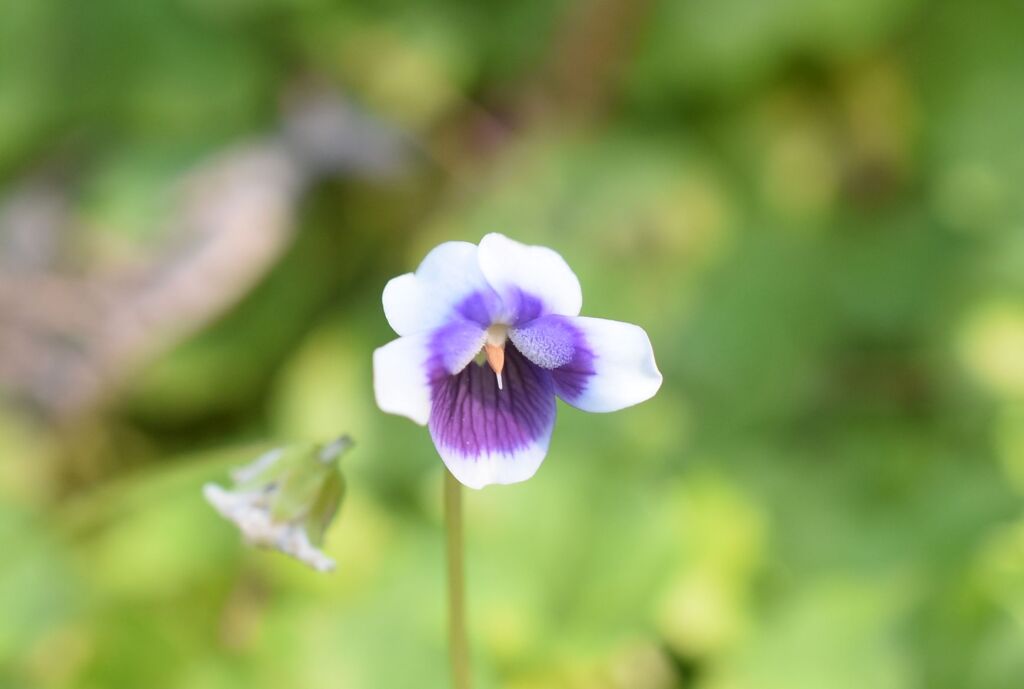Viola banksii
K.R.Thiele & ProberStoloniferous perennial herb, glabrous to pubescent, sometimes tuber-like swellings formed along subterranean stems. Leaves tufted; lamina broad-reniform to orbicular, 12–35 mm long, 20–50(–65) mm wide, basal sinus usually narrow, extending to about the midpoint of the lamina, apex rounded, margins conspicuously but shallowly 10–20-toothed; petioles 2–8(–12) cm long; stipules free, linear-lanceolate, 3–7 mm long, often shallowly gland-toothed. Flower-scapes to 15 cm long, exceeding leaves, bracteoles near middle. Sepals lanceolate, 4–5 mm long, acute, basal appendages small; petals 8–15 mm long, 2-coloured, mauve-violet toward base and white near apex (rarely entirely white), with sharp demarcation between colours; anterior (lower) petal ovate to broad elliptic, broadest in the middle third, usually emarginate, the middle 3 longitudinal veins prominent and parallel, not spurred; lateral petals twisted through 180 degrees, densely bearded in the basal half. Capsule ovoid, 4–6 mm long; seeds 1.8–2.5 mm long, glossy purplish-black.. Flowers mostly Oct.–Feb.
GleP, GipP, CVU, GGr, EGU, HSF, HFE, VAlp. Native to Qld, NSW. Widely cultivated, recorded as naturalised in moist, shaded forest near Healesville, presumably as a result of dumping of garden waste.
Usually a vigorous plant in gardens and often grown, mistakenly, as native V. hederacea.
 Spinning
Spinning


